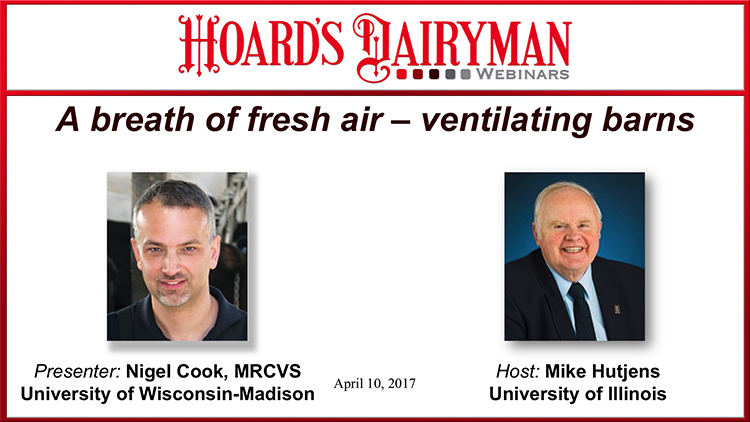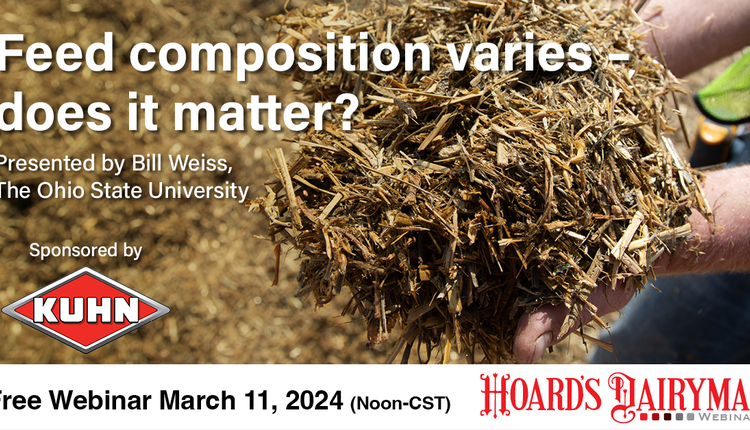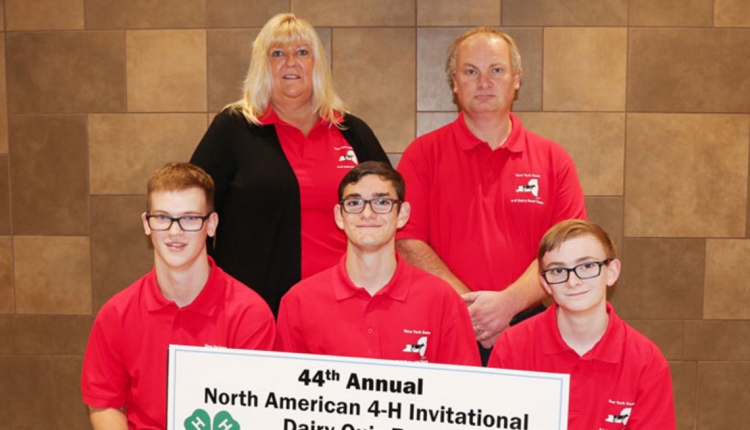
Cows feel heat stress before people do, and higher producing cows generate a lot more heat than lower producing ones. So, keeping cows comfortable is a top priority. Veterinarian Nigel Cook of the University of Wisconsin-Madison Veterinary School, presented “A breath of fresh air – ventilating barns” as the April Hoard’s Dairyman webinar.
A naturally ventilated barn is a great way to house cows if situated properly – typically east to west. Natural ventilation principles include an open ridge, open eaves, an adequate interior roof slope, and curtain sidewalls. Free-flowing air also is best achieved if there is 200 feet between each barn. Wind shadows occur when the buildings are too close together.
However, a naturally ventilated barn is not always an option. There are times when the wind just does not blow. In a Wisconsin study, that is 20 percent of the time in July.
When designing a ventilation system, take into consideration the company’s specific recommendations. Mechanical ventilation systems include air speed, body mass/heat transfer, and air exchanges per hour (ACH). Keep in mind some animal heat estimations are outdated – from 1959! Mechanical systems give producers more control and alleviate bunching in cooler areas, and fly concerns.
Cross-ventilated and tunnel barns need some additional discussion. Baffles typically do not provide benefit in a tunnel barn and feed curbs function as a baffle, too. Making the pitch of the roof less steep can be beneficial. Getting fast-moving air right down to where cows are resting is extremely important. Heat stressed cows spend more time standing, which hurts performance.
It is best to locate fans closer to the cows and angle them down toward the cows. Ideally, fans should be spaced 24 feet apart. The large, slower-speed horizontal circulating fans have not been shown to be effective ventilation tools.
Hybrid barns can mechanically ventilate in the summer and naturally ventilate in the winter. The disadvantage is higher construction cost over a mechanically ventilated barn. But, the upside is cows can go outside when the weather is amicable.
Ventilation design needs thought. The air changes must remove heat and moisture from the barn. Dr. Cook reminded listeners, “The system should work as well in the winter as it does in the summer.”
There are various methods to ventilate barns. Consider all the options and choose the economical solution that fits your environment and operation. Cook’s presentation includes a cost analysis of several ventilation choices. Costs not typically associated with the construction of the barn, but still need to be considered, are excavation costs and new maintenance expenses.
To learn more about ventilation in dairy barns, view the archived webinar.
Next webinar:

Join us as Mike Hutjens, University of Illinois presents “On-farm feeding diagnostics” on Monday, May 8, at noon (Central time).
Cows are “talking” to us every day, but are we listening? This webinar will explore measurements that can improve profits, milk yield, feed digestion, health, and reproductive performance. Physically effective fiber, starch utilization, protein capture, and feed processing will all be covered in this fast moving webinar. The webinar is sponsored by Ajinomoto Heartland. (http://www.AjiPro-L.com)
Register at www.hoards.com/webinars.
The author is the online media manager and is responsible for the website, webinars, and social media. A graduate of Modesto Junior College and Fresno State, she was raised on a California dairy and frequently blogs on youth programs and consumer issues.











